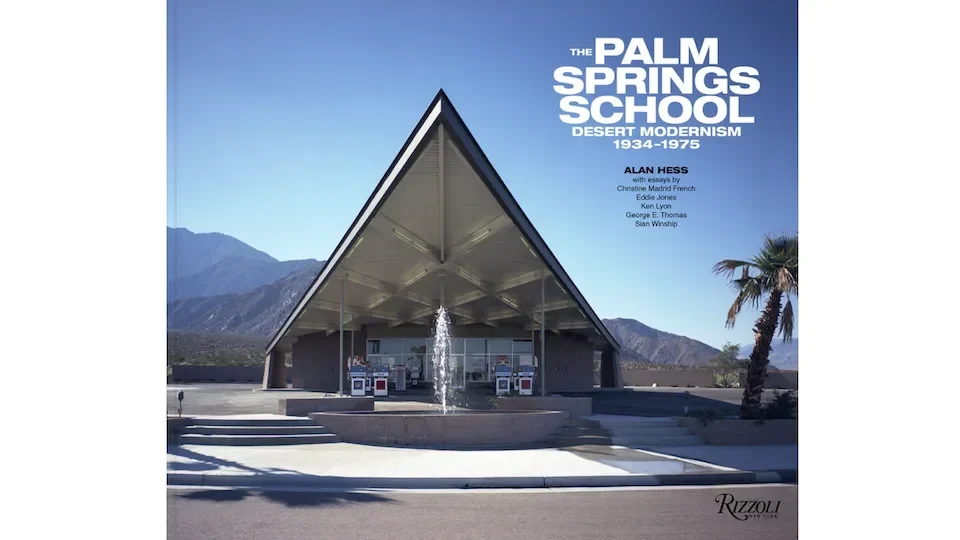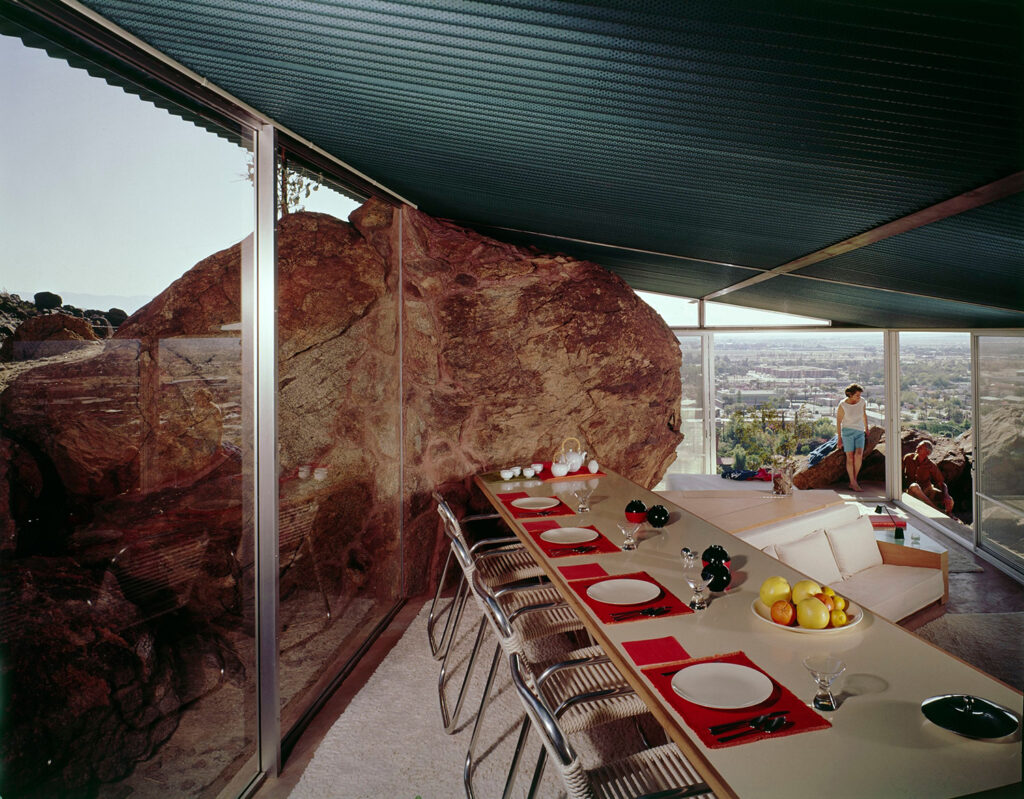
There is a certain allure to Palm Springs, the embodiment of desert chic and glam. It is like no other place in the world. This tiny resort town in Southern California, situated in the heart of the Sonoran Desert and known for its hot springs, was transformed during the mid-19th century from a sleepy village to the center of modernist architecture. The best architects, most prolific modernists, and the brilliant talents of the West Coast came to Palm Springs and built bespoke dream houses, conceived particularly for its distinctive climate. While formulating a unique and innovative desert modernism, they successfully merged the principles of the Modern Movement with those of the American Dream into exceptional residences, hotels, churches, schools, and every conceivable type of architecture. In recent years, Palm Springs has become a global travel destination for lovers of mid-century design, particularly during the annual Modernism Week, a festival celebrating architecture, design, and culture.
A new book, The Palm Springs School: Desert Modernism 1934-1975, by California architecture historian Alan Hess, recently published by Rizzoli, is the first to fully explore the body of architecture built during Palm Springs’ golden age. Through the various stories that have created the town’s legacy, Hess and other contributors explore and reveal both the known and unknown in the history of that special, sophisticated, simple, cool, and unique symphony of modernism. I invited Hess as my guest on the series, Interior Design: Then and Now.
Most architecture legends active in Southern California – Richard Neutra, John Lautner, William F. Cody, E. Stewart Williams, Albert Frey, and William Pereira, to name a few — left their mark on the breathtaking built fabric of the world’s most concentrated desert modernism. They were imaginative and enthusiastic about forging something new and exciting, making creativity an emblem of the Palm Springs School. After all, building glass boxes in that unforgiving climate required innovative solutions and independent thinking. Features such as mechanical air conditioning, wide eaves to prevent sunlight from streaming indoors, and movable and fixed sunscreens became the touchstone of the Palm Springs mid-century architecture. It was the most advanced building technology and materials of the time, which enabled them to devise new, cutting-edge formulas. They built all types of architecture, confined to the single-story height restrictions. In short, Palm Springs became a laboratory of modernism, far from where it was born at the heart of the Weimar Republic’s influential artistic and intellectual movements.
During the interwar and postwar years, Palm Springs attracted Hollywood royalty, politicians, and jetsetters, who sought to spend their weekends and winters in new, stylish homes and to experience the accompanying glamorous lifestyles. Edgar J. Kaufmann commissioned Richard Neutra with one of the most iconic houses of the time, the so-called ‘Desert House,’ completed in 1946, precisely a decade after the more famed house, Fallingwater, was built by Frank Lloyd Wright. In the same year, Frank Sinatra’s Twin Palms was completed, designed by E. Stewart Williams with long horizontal lines and non-traditional building materials. Philanthropist Walter Annenberg commissioned A. Quincy Jones with his famed pink-roofed Sunnylands, built in 1963, where he housed his collection of Impressionist and Post-Impressionist paintings, watercolors, and drawings, later endowed to the Metropolitan Museum of Art. In the 1970s, Bob Hope commissioned starchitect John Lautner to create a concrete futuristic house with an enormous streamlined roof which dominated the landscape of the town; Lautner created another Space-Age home of fantasy for interior designer Arthur Elrod, which will be forever be remembered as the photogenic house in the 1971 James Bond film, Diamonds are Forever, starring legendary agent 007 Sean Connery.
While the book includes a long list of celebrities who made Palm Springs their home, we learn that, along with breathtaking, pristine, sophisticated, and stylish homes, Palm Springs was the center for mass-produced, prefabricated homes. These homes were not dissimilar to those in other areas of suburban America but perfectly contextual and authentic, unlike the sameness of postwar Suburban America.
While I found that the discussion on the other contemporary schools of architecture existed in the US – the Arizona School and the Sarasota School less relevant, the chapter I found most refreshing was the concluding chapter by Ken Lyon on historic preservation, which highlights the rediscovery and recognition of modernist architecture and the evolution of Palm Springs of the 21st century. While the contemporary counterpart of the Palm Springs School, the Case Study Program (another ambitious project of modernist Southern California architecture) gained an iconic position in architecture history and scholarship, it was in Palm Springs that modernist houses were built in great quantities.
I was surprised to learn that the rediscovery of Palm Springs modernism is relatively new. Richard Neutra’s Desert House, the first to be recognized as a landmark, was followed by the establishment of the Palm Springs Historic Site Foundation and more initiatives after 2000. In 2009, First Lady Michelle Obama recognized Palm Springs as a Preserve America Community, a program that supports local efforts to preserve American cultural and natural heritage.
Hess knows Southern California architecture as few others, having published monographs and architecture books on a variety of topics related to California modernism. He knows not only the history of each building, but also its current state, restoration projects, and the people who have lived there, past and present. He has visited them all, bringing his personal memories and experiences, and breathing fresh air into the fascinating story of a sleepy town in the California desert, which became a world-renowned center for design culture.
Images courtesy of The Palm Springs School: Desert Modernism 1934 – 1975.

Photographer Julius Shulman. © J. Paul Getty Trust. Getty Research Institute, Los Angeles.

Photographer Unknown; courtesy of Palm Springs Art Museum, Albert Frey Collection.

Photographer Dan Chavkin.
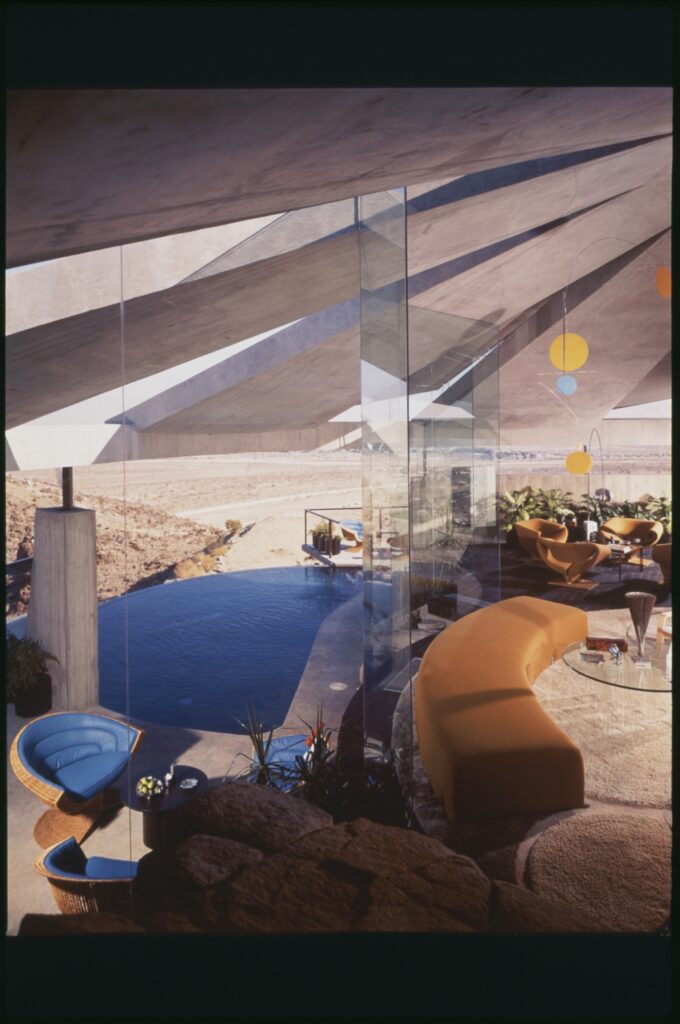
Courtesy of Palm Springs Art Museum.
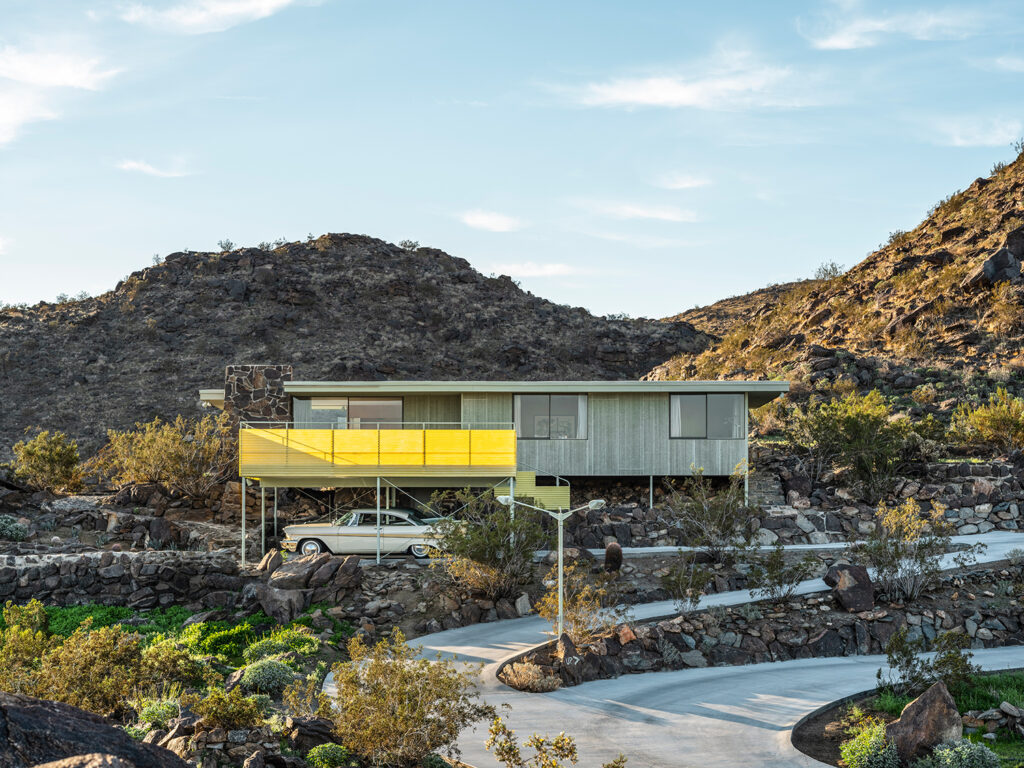
Photographer Lance Gerber.
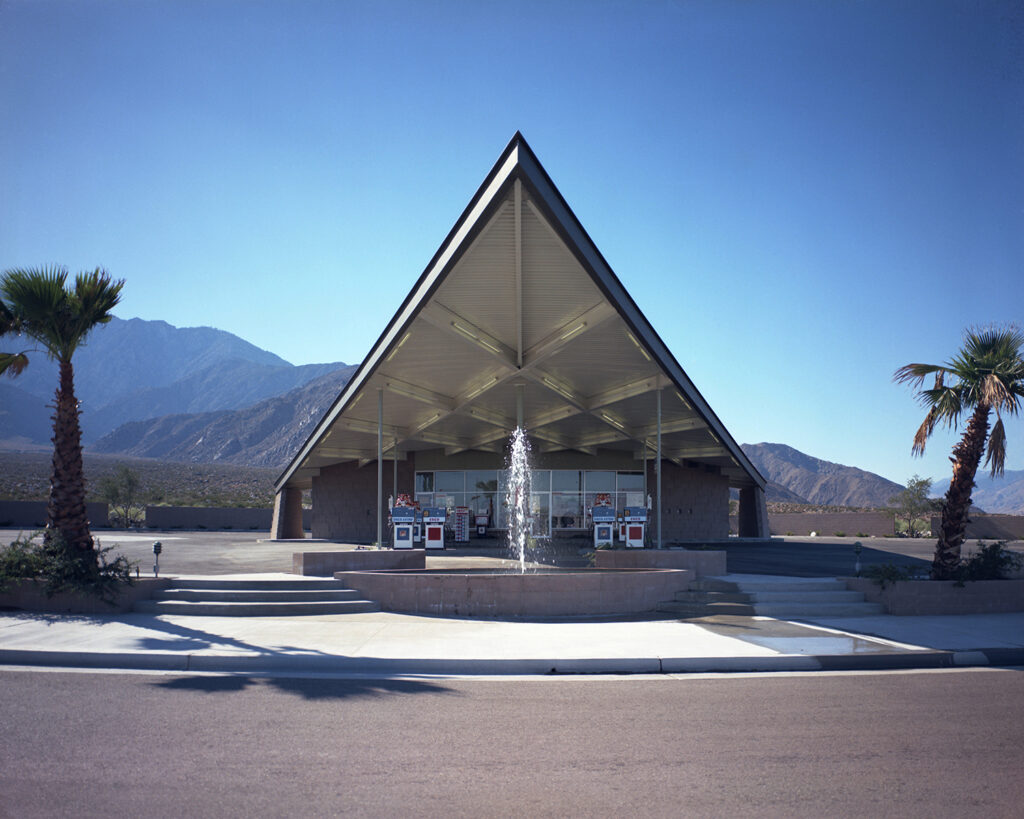
Photographer Bill Anderson. Courtesy of Palm Springs Art Museum, Gift of Mrs. Dorothy M. Anderson.
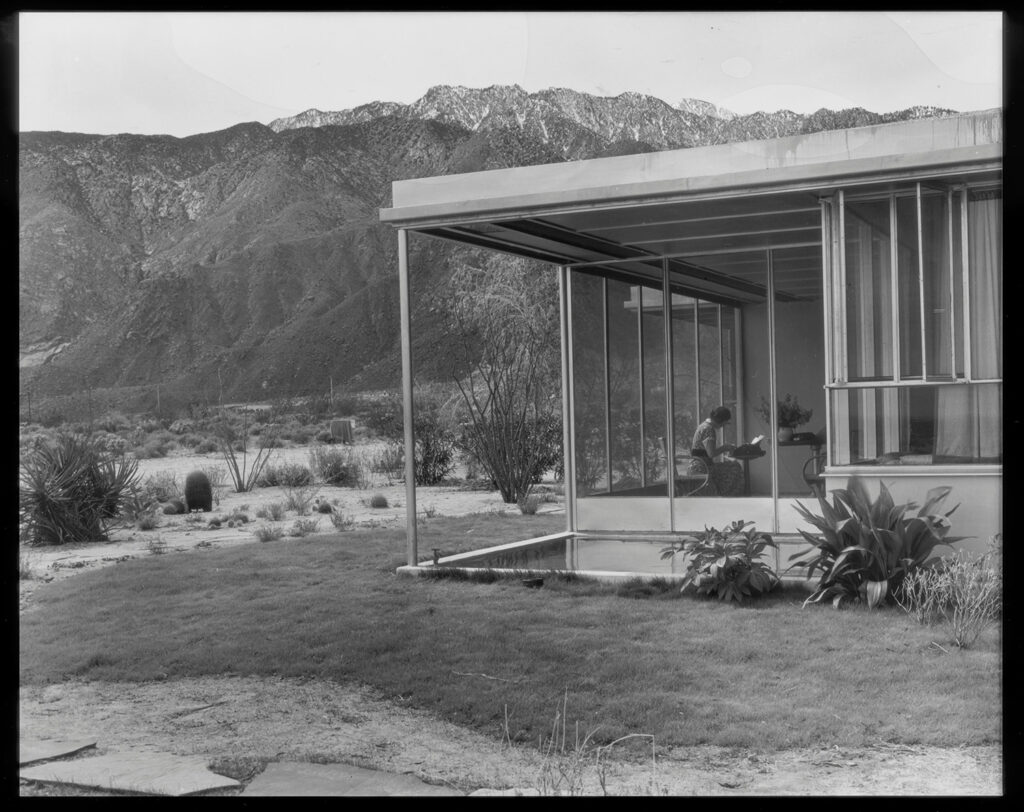
Photographer Julius Shulman.
© J. Paul Getty Trust. Getty Research Institute, Los Angeles
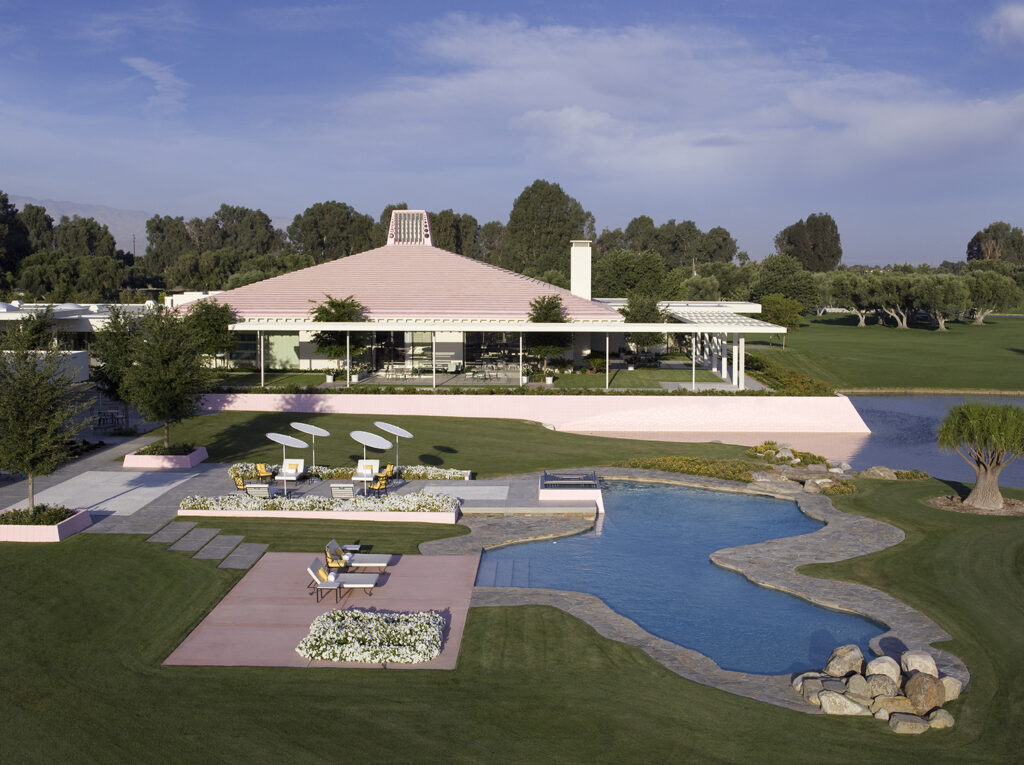
Sunnylands, A. Quincy Jones and Frederick Emmons, 1966.
Photographer Ken Hayden.
© The Annenberg Foundation Trust at
Sunnyland.
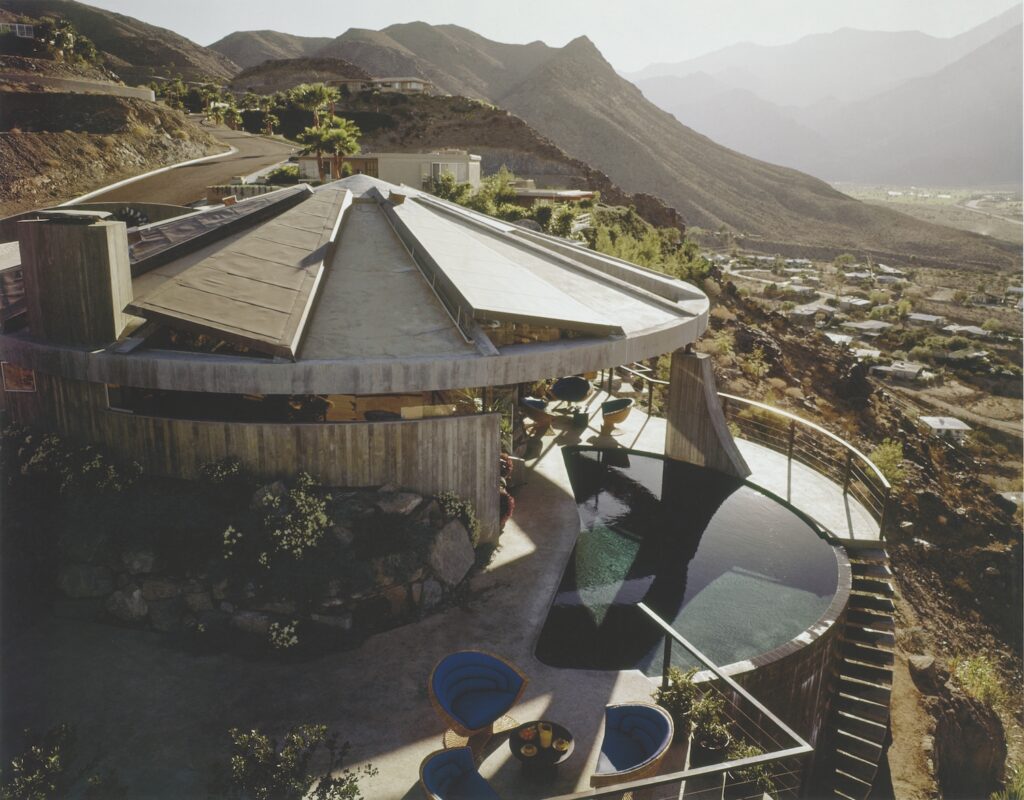
Photographer Leland Lee.
Courtesy of Palm Springs Art Museum

Alexander Steel Homes), Donald
Wexler and Richard Harrison,
Photographer Dan Chavkin.Steel Development Homes (now
Alexander Steel Homes), Donald
Wexler and Richard Harrison,
Photographer Dan Chavkin.

Frey Seated, Albert Frey, 1940. Photographer Unknown.
Courtesy of Palm Springs Art Museum, Albert
Frey Collection.
